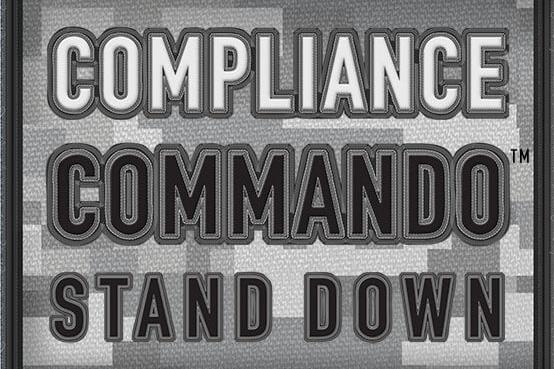Compliance Commando Stand Down: Understanding Oversight

Compliance programs are mission-critical. But compliance isn’t one-size-fits-all. Like military strategy, it must adapt to industry standards, operational scope, and shifting regulatory and enforcement terrain. A well-designed compliance program starts with strategic oversight, much like a well-run military operation.
Oversight: Establishing Command & Control and Defining the Mission
At its core, compliance oversight is about defining leadership and setting structured directives to ensure mission success.
Command & Control: Every mission starts with a strategy set by the top of the chain of command. In the corporate world, the CEO or Board of Directors acts as this governing authority. It is the board and CEO who have the duty of care to oversee the implementation of an effective compliance & ethics program including issuing the appropriate directives and orders to subordinates and making resources available.
Defining the Mission - the Compliance & Ethics Charter: For any mission to succeed, it must be communicated clearly to subordinates. This should be accomplished in a written corporate Compliance & Ethics Charter that establishes the 4 R’s of the mission:
- Roles – Who is responsible and accountable?
- Responsibilities – What are their duties?
- Reporting – Who do they report to and what do they need to report?
- Reach – What authority do they have?
Roles: The Commanding Officer
Every mission needs a Commanding Officer to lead the charge. In corporate governance, this role is typically held by the Chief Ethics and Compliance Officer (CECO), who has “line of sight” supervision of corporate compliance efforts and ensures the program is implemented and stays on target. The Charter should describe the title and role of the CECO in addition to any other roles created to manage the program, such as a Deputy or Assistant CECO, compliance champions or delegates, or training managers.
Responsibilities: Regular Duties
The Charter should include defined responsibilities and duties for each role, and success should be measured with defined metrics.
Reporting In
No commander operates without constant intelligence - daily or even hourly. Likewise, compliance leaders must receive and relay regular reports and key metrics. This helps Command & Control oversee the mission and make any adjustments to the tactical approach.
Reach
A Commanding Officer can’t execute a successful mission without full access to relevant information, documents, data, and employees. Individuals overseeing the compliance program must have sufficient authority and independence to maneuver within the organization.
Staying Mission-Ready
Keep in mind that a compliance and ethics program is a strategic operation that requires tactical leadership, a charter, specified roles and responsibilities, and effective reporting and reach. With these factors in mind, you can ensure your organization stays mission-ready for the foreseeable future.
Need more troops? We are committed to providing you with the CLEAResources you need. Contact us today to accomplish your compliance mission, no matter how big or small. Our troops are trained and ready to move out!


